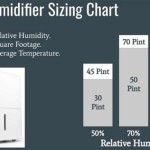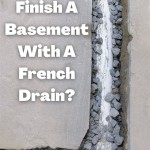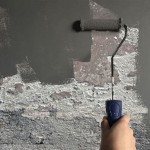Fuzzy White Mold in Basement: Identification, Causes, and Remediation
The presence of fuzzy white mold in a basement is a common concern for homeowners. While mold of any color can be problematic, white mold often raises questions about its specific nature, potential health risks, and appropriate remediation strategies. This article will provide a comprehensive overview of fuzzy white mold in basements, covering its identification, the underlying causes of its growth, and the recommended steps for effective removal and prevention.
Mold thrives in environments characterized by moisture, darkness, and organic material. Basements, due to their subterranean location, are frequently susceptible to these conditions, making them prime locations for mold growth. Understanding the specific factors that contribute to white mold in basements is crucial for implementing targeted and lasting solutions.
It is important to note that visual identification alone is not sufficient for definitively determining the specific type of mold present. While "white mold" is a common descriptor, several different mold species can appear white, especially in their early stages of growth. Therefore, professional mold testing is recommended to accurately identify the specific species and inform the most effective remediation plan. This article aims to offer guidance on addressing potential problems associated with fuzzy white mold, but it is not intended to replace professional advice or services.
Identifying Fuzzy White Mold
Fuzzy white mold, as the name suggests, often presents as a white, cottony, or thread-like substance growing on surfaces. The texture can range from fine and downy to thick and matted. It is frequently found on damp or decaying organic materials, such as wood, drywall, paper, and fabrics. The color may vary slightly depending on the specific type of mold and the growth conditions. Some species might exhibit a yellowish or grayish tinge, while others may darken with age.
Distinguishing white mold from other substances commonly found in basements can be challenging. Efflorescence, a crystalline deposit of salt left behind by evaporating water, is often mistaken for mold. Efflorescence is typically a hard, brittle substance, while mold is generally soft and fuzzy. Unlike mold, efflorescence does not pose a health risk, although its presence indicates underlying moisture problems that should be addressed.
Another potential source of confusion is the presence of mildew. Mildew, like mold, is a type of fungus that thrives in damp environments. However, mildew typically appears as a flat, powdery coating, often gray or white in color. It is generally less aggressive than mold and easier to remove. However, even mildew indicates a moisture problem that needs to be addressed to prevent more serious mold growth.
Careful observation and comparison with images of known mold species can help in preliminary identification. However, as previously mentioned, professional mold testing is the most reliable way to determine the specific type of mold present in the basement.
Causes of Fuzzy White Mold Growth in Basements
The primary driver of mold growth in basements is moisture. Several factors can contribute to excessive moisture levels, creating an environment conducive to mold proliferation:
Water Leaks: Leaky pipes, both in the plumbing system and in appliances such as washing machines and water heaters, are a frequent source of moisture in basements. Even small, slow leaks can provide enough water to sustain mold growth over time. Cracks in the foundation walls or floor can also allow water to seep into the basement from the surrounding soil.
High Humidity: Basements tend to be cooler than the rest of the house, which can lead to higher relative humidity. Warm, moist air from upstairs can condense when it comes into contact with the cool basement surfaces, providing a source of moisture for mold growth. Inadequate ventilation can exacerbate this problem, trapping moisture within the basement.
Poor Ventilation: Proper ventilation is essential for removing excess moisture from the air. Basements that lack adequate ventilation are more likely to experience high humidity and mold growth. Natural ventilation can be achieved by opening windows and doors, while mechanical ventilation can be provided by exhaust fans or dehumidifiers.
Inadequate Waterproofing: The absence or failure of basement waterproofing measures can allow water to penetrate the foundation walls and floor. This can occur due to deteriorated waterproofing membranes, damaged drainage systems, or inadequate grading around the foundation. Hydrostatic pressure from groundwater can also force water through cracks and porous materials.
Condensation: Condensation occurs when warm, moist air comes into contact with a cold surface. In basements, condensation can form on cold pipes, concrete walls, and uninsulated surfaces during periods of high humidity. This condensation provides a direct source of moisture for mold growth.
Flooding: Basement flooding, whether caused by natural disasters, plumbing failures, or sewage backups, introduces large amounts of water into the basement. If not promptly and thoroughly dried, these floods can quickly lead to widespread mold growth. Even after the floodwater has been removed, lingering moisture within the walls, floors, and contents can support mold growth for extended periods.
Presence of Organic Materials: Mold requires organic material as a food source. Basements often contain a variety of organic materials, such as wood framing, drywall, paper products, cardboard boxes, and fabrics. These materials provide a readily available food source for mold to thrive on.
By addressing these underlying causes of moisture, homeowners can significantly reduce the risk of mold growth in their basements.
Remediation and Prevention Strategies
Once fuzzy white mold has been identified in the basement, prompt and thorough remediation is essential to prevent further growth and potential health problems. The remediation process should address both the visible mold and the underlying moisture source.
Safety Precautions: Before beginning any mold remediation work, it is important to take appropriate safety precautions. This includes wearing personal protective equipment (PPE) such as a respirator, gloves, and eye protection. This will help to minimize exposure to mold spores, which can cause allergic reactions and respiratory problems. It is also advisable to ventilate the work area to reduce the concentration of airborne spores.
Source Control: The first step in mold remediation is to identify and eliminate the source of moisture. This may involve repairing leaky pipes, sealing cracks in the foundation, improving ventilation, or addressing other moisture-related issues. Without addressing the underlying moisture problem, mold will likely return even after remediation efforts.
Containment: To prevent the spread of mold spores to other areas of the house, it is important to contain the work area. This can be done by sealing off doorways and vents with plastic sheeting. A negative air machine can be used to create negative pressure within the containment area, preventing spores from escaping.
Mold Removal: The method of mold removal will depend on the type of material affected and the extent of the contamination. Non-porous materials such as concrete and tile can often be cleaned with a mold-killing solution and a scrub brush. Porous materials such as drywall, wood, and fabrics may need to be removed and discarded if they are heavily contaminated. If the mold growth is extensive or involves hazardous materials such as asbestos, it is best to hire a professional mold remediation company.
Cleaning and Disinfection: After the visible mold has been removed, it is important to clean and disinfect the affected area. This can be done using a mold-killing solution or a bleach solution (1 part bleach to 10 parts water). Be sure to follow the manufacturer's instructions for the cleaning solution.
Drying: Thoroughly drying the affected area is crucial to prevent mold from returning. This can be done using fans, dehumidifiers, or other drying equipment. Ensure that all surfaces are completely dry before replacing any removed materials.
Prevention: After remediation, ongoing prevention measures are essential to prevent future mold growth. These measures include:
Maintaining Low Humidity: Keeping the basement humidity below 50% will help to prevent mold growth. This can be achieved by using a dehumidifier, improving ventilation, and sealing air leaks.
Regular Inspections: Regularly inspect the basement for signs of moisture or mold growth. This will allow you to identify and address problems early before they become more severe.
Proper Ventilation: Ensure that the basement is adequately ventilated to remove excess moisture. This can be achieved by opening windows and doors when possible, using exhaust fans, or installing a ventilation system.
Waterproofing: Invest in basement waterproofing measures to prevent water from entering the basement. This may include sealing cracks in the foundation, installing a drainage system, or applying a waterproof coating to the walls and floor.
Removing Organic Materials: Minimize the amount of organic material stored in the basement. Store items in airtight containers and avoid storing items directly on the floor.
Promptly Addressing Water Damage: If the basement experiences water damage, promptly clean and dry the affected area to prevent mold growth.
By following these remediation and prevention strategies, homeowners can effectively address fuzzy white mold in their basements and maintain a healthy indoor environment. It is always advisable to consult with a professional mold remediation company if the mold growth is extensive or if you have any concerns about the remediation process.

How To Get Rid Of And Prevent Mold Growth On Concrete Environix

White Mold Is It Dangerous How To Remove Busters

White Fluffy Mold On Concrete It S Salt Silly Askthebuilder Com

White Mold Is It Dangerous How To Remove Busters

How To Get Rid Of And Prevent Mold Growth On Concrete Environix

Learn What Is Efflorescence

White Mold Is It Dangerous How To Remove Busters

Is White Mold Dangerous How To Get Rid Of

Understanding White Mold Types Causes Prevention Treatment

What Is White Mold And It Dangerous Puroclean Of Coral Gables
Related Posts







